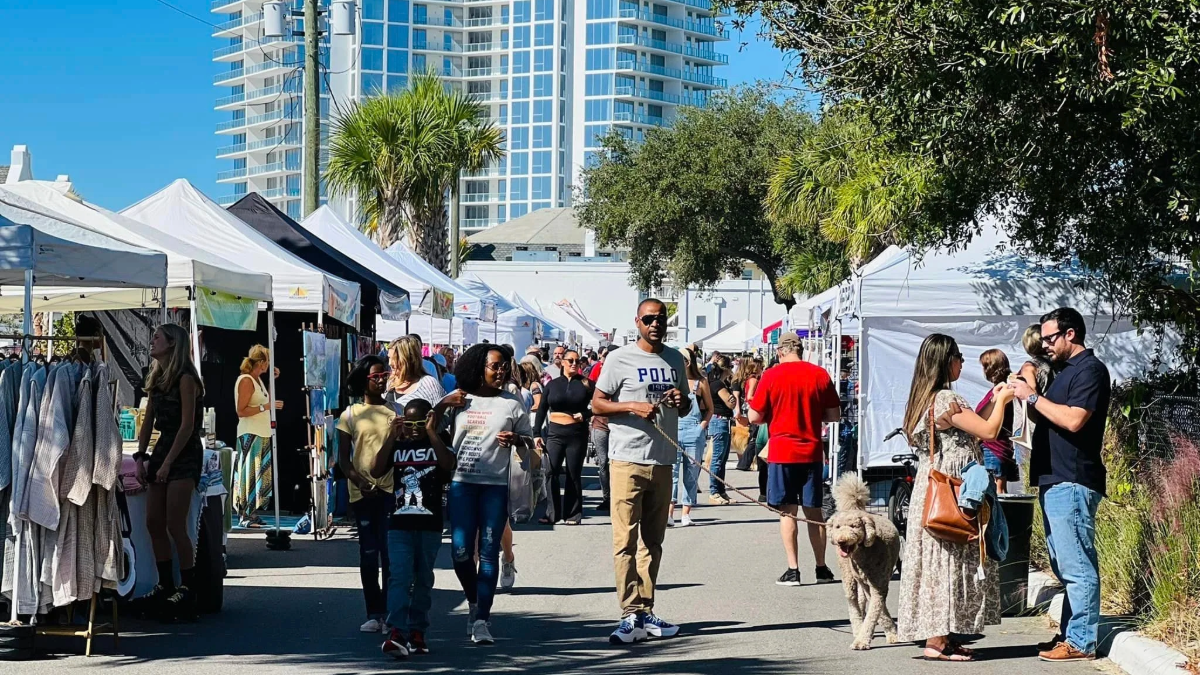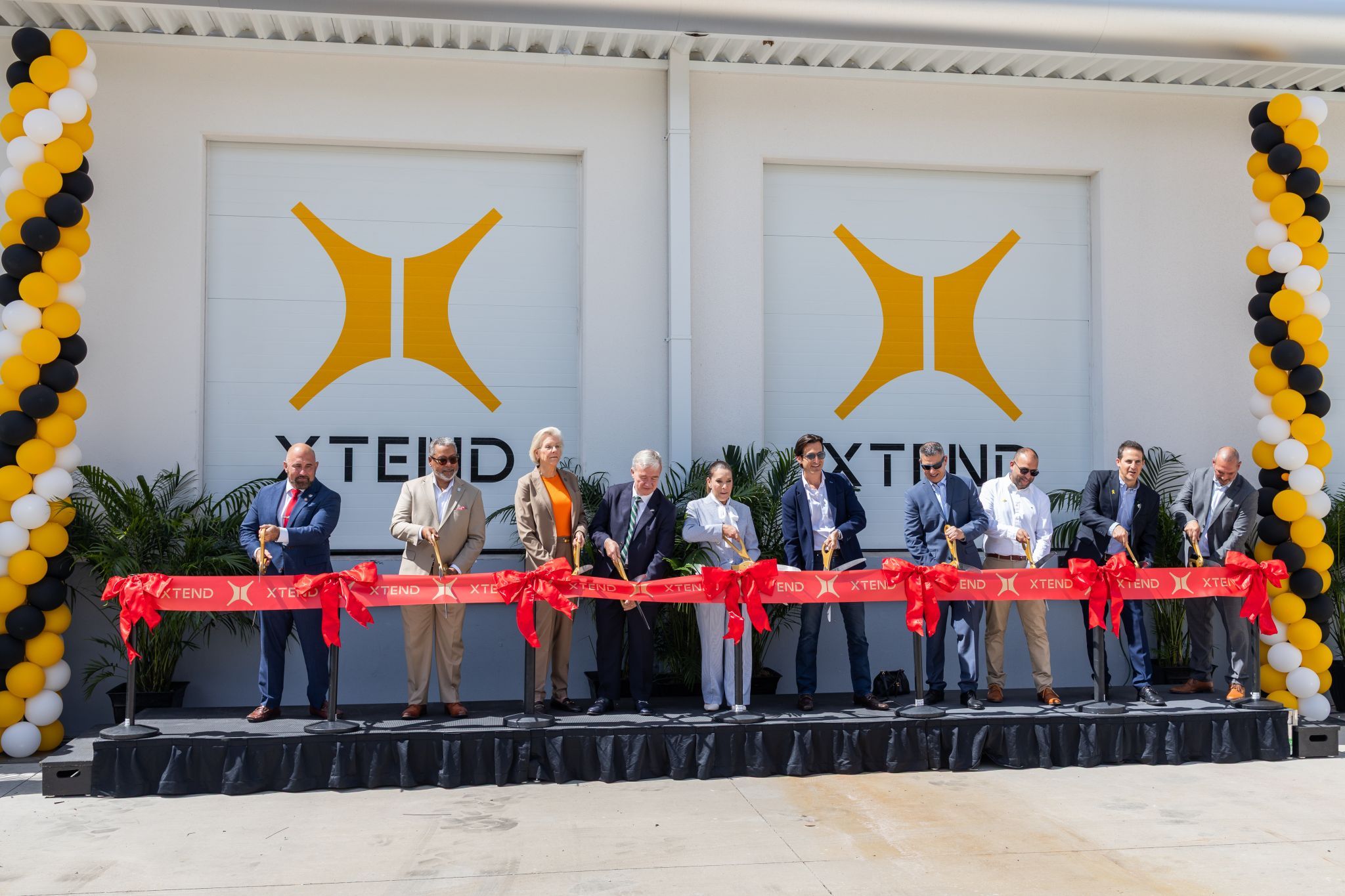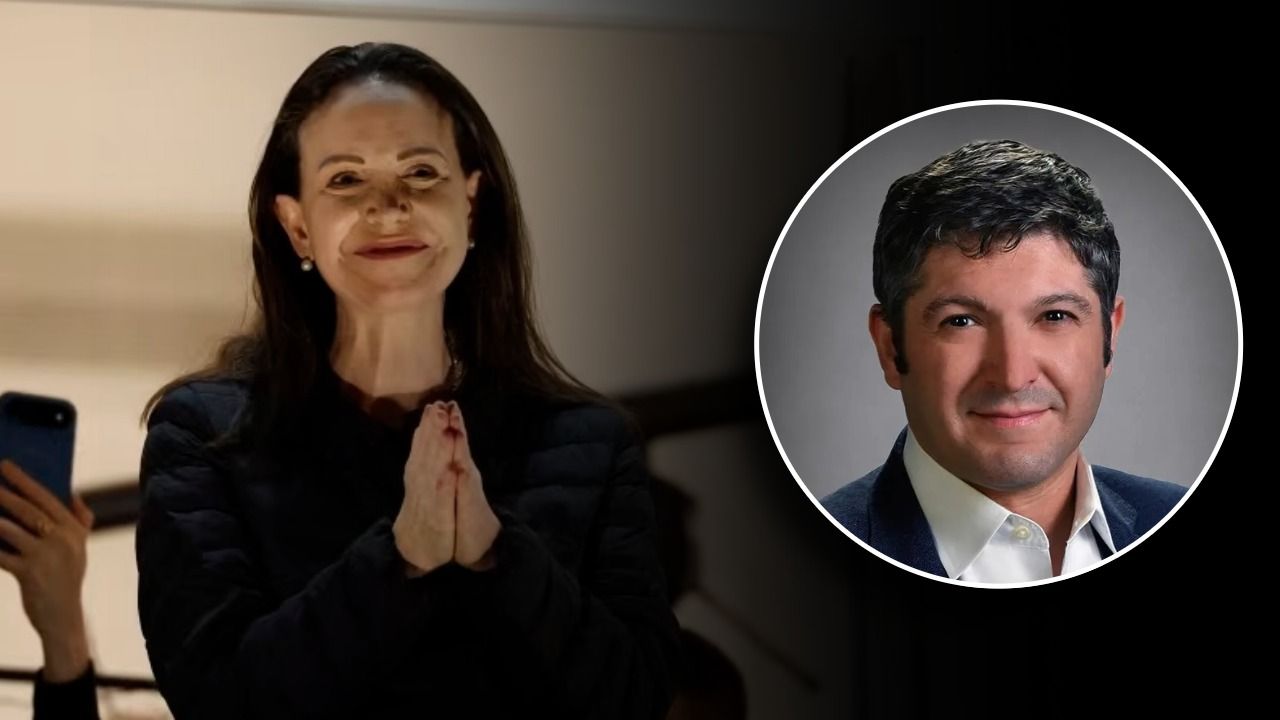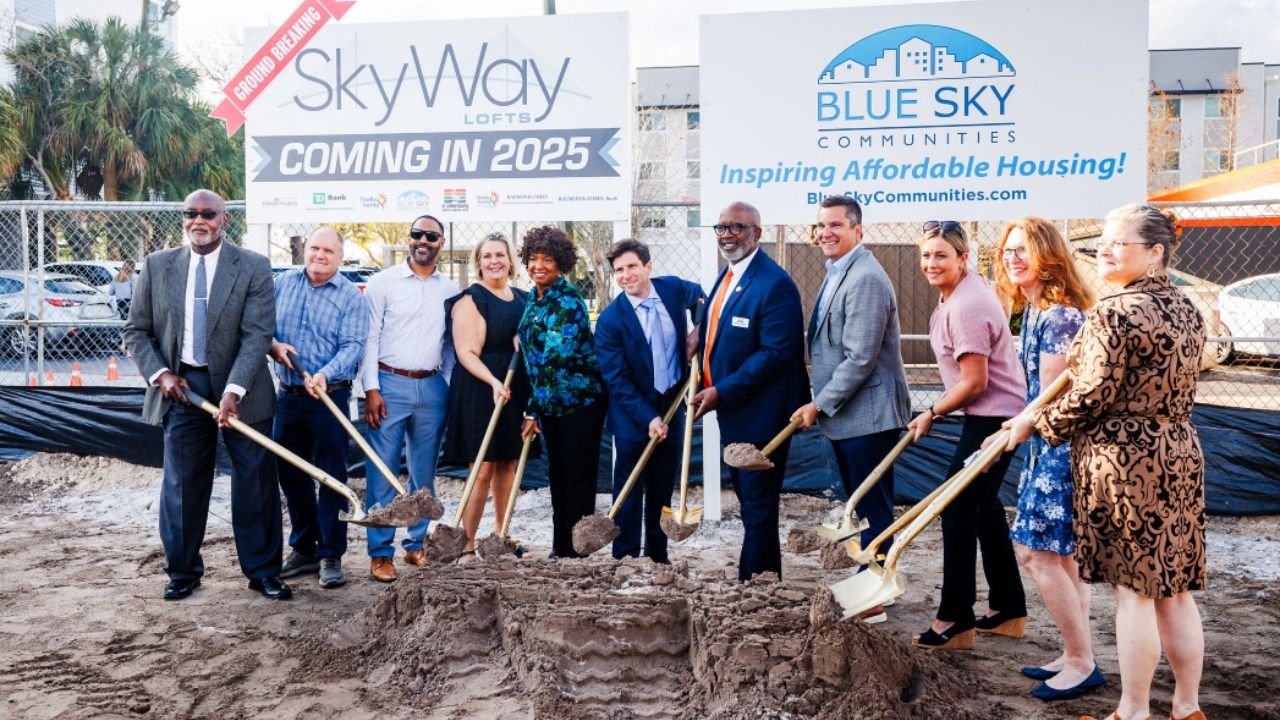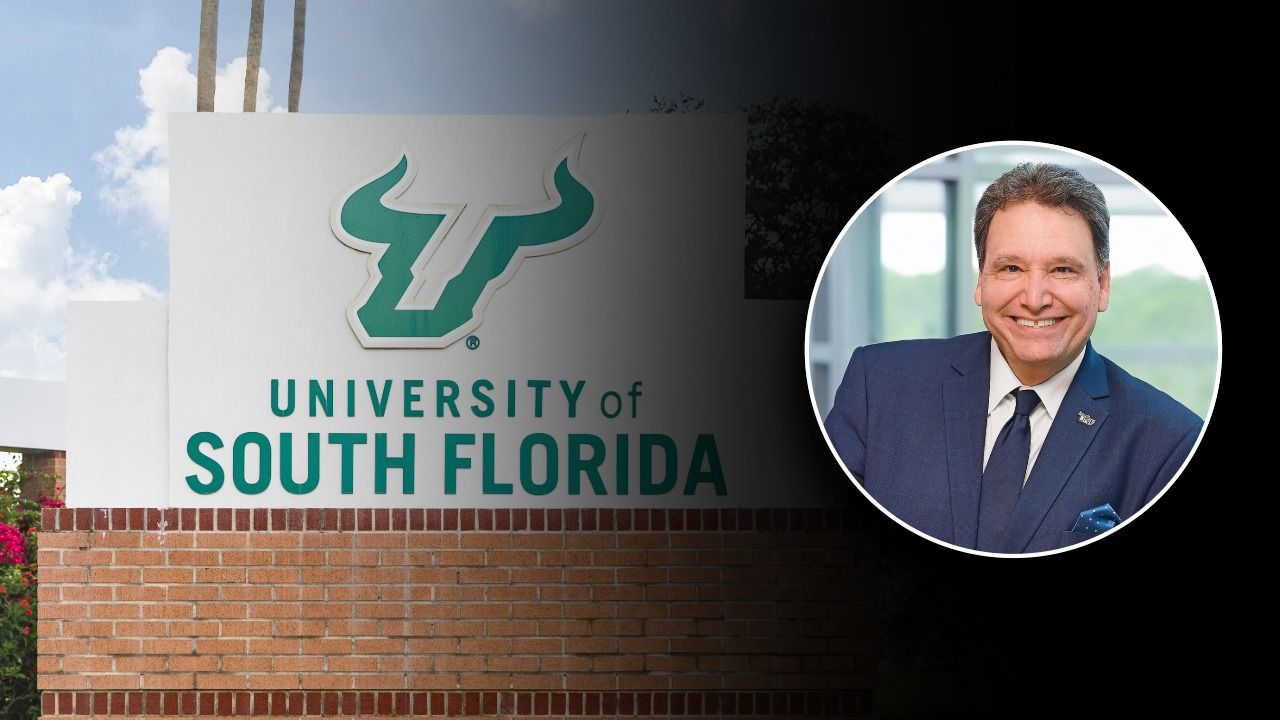Collaboration is brought up a lot when speaking to various economic development entities, either the lack thereof or the presence of it, and its benefits.
So what happens when two leaders of economic development entities, across a bay from one another, become friends and work together to benefit their respective communities? A lot of progress. At least that’s the case for Jason Mathis, chief executive officer of the St. Petersburg Downtown Partnership, and Shaun Drinkard, interim president of the Tampa Downtown Partnership.
Tampa Bay Business & Wealth sat down with Mathis and Drinkard to learn more about their organizations, how they work together and their friendship.
Talk a little bit about your organizations. Why they were formed and what are their missions, because some people may not know.
Drinkard: [The Tampa Downtown Partnership] has been a special service district for 37 years. Today, we have a $4.6 million budget for 1,177 acres. And that’s seven different neighborhoods. So it’s a pretty large footprint. We have contractual agreements with the city for certain services. So I think that’s probably the most distinctive thing in how our two organizations operate. We have a membership base that is strictly for our advocacy-oriented work. Assessment dollars don’t go to any type of advocacy work.
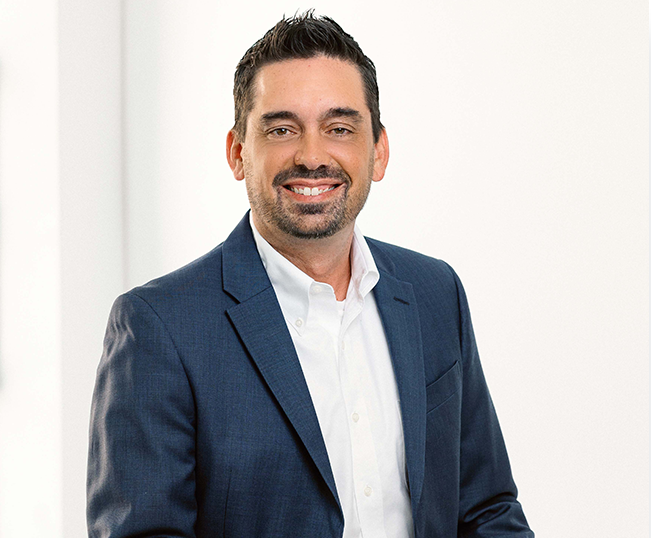
Mathis: Our distinction is St. Petersburg does not currently have a special assessment. For whatever reason, downtown St. Pete never made that determination. Property owners didn’t make that determination. So our financing is almost 100% private financing. Our budget is about half the size of Tampa’s, it’s about a $2 million budget. And it comes from two major sources. One is membership. We generate about $400,000 a year in membership revenue and then the rest comes from some property management contracts that we have providing property management services.
All of our energy goes toward policy, advocacy work and lobbying. We have a lobbyist in Tallahassee and another lobbyist in Washington, D.C. We spent a lot of time working on issues related to legislative agenda, or the city council, we are heavily involved in conversations about gas, plant redevelopment and density for Sun Runner, things that are kind of boring to a lot of people. But really, what our organization has focused on is long-term projects that will benefit downtown as opposed to day-to-day maintenance issues.
What’s interesting, too, is that you’ve formed kind of an alliance. Talk about that collaboration.
Drinkard: Our collaboration kind of resonates through the work we do on an international level. We have an organization, the International Downtown Association, where cities look at other cities, because sharing information within urban cores is inherently valuable. They’ve done a great job ensuring that collaboration happens at an international level.
We do it all the time. We can pick up the phone and make that call to Seattle, San Francisco, New York, or wherever it might be, that we have those relationships. And that’s something that the public may not know or understand.
I knew [Mathis] through IDA, and knowing who Jason was already, once he landed here, I was like, ‘Jason is one of us. I know Jason.’ That’s how we were able to immediately start that conversation.

Mathis: Sean was the first person to call and congratulate me on the job and said, ‘Let’s work together when you get here.’ We’re really good friends and we genuinely like each other, so that helps a lot, but I think it goes beyond that.
I think sometimes economic development organizations have a scarcity mentality. Particularly with corporate recruitment or membership bases, people are like, ‘Well, if this city wins, we lose.’ There’s this idea that there must be a winner and a loser. But for downtowns, that’s not the case. If downtown Tampa is wildly successful that only makes it easier for downtown St. Pete to be wildly successful as well.
One of the real challenges we’re facing in downtown St. Pete, right now, is how do we get new office space built? We haven’t had a new office building, in downtown St. Pete, for decades. It’s a complicated, and challenging, project to finance. One of the reasons it is difficult to finance is because currently in downtown St. Pete, the highest rate that people are paying for office [space] is about $40 a square foot and $40 a square foot doesn’t justify building a new building, because it’s so expensive for construction costs and land in downtown St. Pete.
But what if we could get $60 a square foot? We could afford to build office space in downtown St. Pete. But that’s what it would take for a developer to break even or make a little profit. And we’re not getting that. But guess what? Water Street, now, is getting $60 a square foot. So we can point across the Bay and say people are paying $60 per square foot [in downtown Tampa] and here’s a [comparison]. So downtown Tampa’s success can actually help downtown St. Pete be successful. That’s just one, very, concrete example.
Shaun, how about your organization? Anything you’re learning, or studying, over in St. Pete?
Drinkard: For us, we’re very focused on the seven neighborhoods that make up downtown. The residential base in downtown St. Pete has existed and been there, in a different way much longer than what downtown Tampa has seen. Now these seven, distinct neighborhoods are a really like huge driver for us. We’re looking at what are the identities of these neighborhoods. Because [residential] is the next important step for us. Maybe we can make a step forward with more housing options by watching what St. Pete’s has already done, for decades.
What haven’t we talked about that you think our readers should know?
Mathis: This region is really hot right now, on a national level. And it’s going to continue to grow, exponentially, over the next decade. We can either fight that growth, we can complain about it or we can work together to try and manage that growth in ways that are more constructive. And, I think, the relationship between downtown St. Pete and downtown Tampa is a model for other economic development organizations to look at. How are we going to collaborate to manage the growth because it’s a regional issue? It’s regional growth, it’s not happening in just one city or the other. By collaborating and working, in a cooperative way, we can help to manage that growth in ways that benefit everyone.
Drinkard: Where else in the state of Florida do you have two urban cores, within one region, that are so vibrant but distinctly different, but close? That doesn’t exist anywhere else in the state of Florida.
Mathis: [Our] urban cores have such distinct personalities. Downtown St. Pete feels very different than downtown Tampa. And even in downtown St. Pete, Central Avenue feels different than Beach Drive. And Tampa Water Street feels different than the traditional core. I think understanding the strengths of each neighborhood, and the strengths of each city, and trying to build off that is a really smart move. ♦





